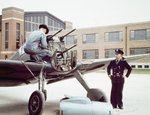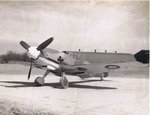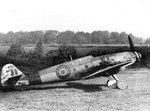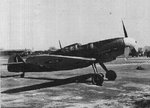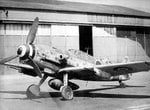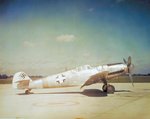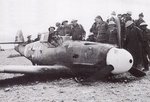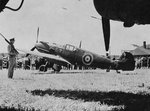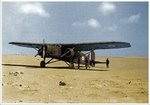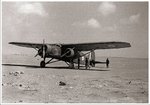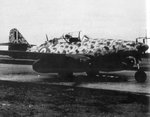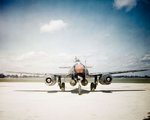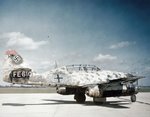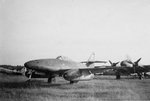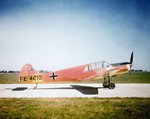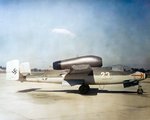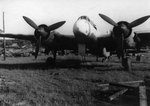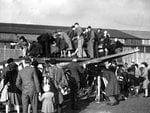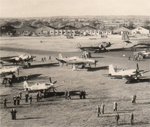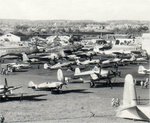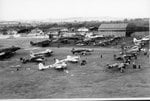- Thread starter
- #21
The Royal Air Force tested various captured variants during and after the war.
- Ju-87 B-2, Unit: ex 209 Squdriglia, 97 Gruppo Bombardamento a Tuffo, Serial: ex 209-18 (W.Nr.5763). Unknown location, Libya, September 1941. The aircraft was captured by British troops in September in the Libyan desert. Strangely enough, the Italian Stukas never received a desert camouflage scheme as their German counterparts did, and flew in their original 'continental' colours in North Africa.
- Ju-87 D, Unit: 112 Sqn, Serial: unknown. Captured by 112th Sqn RAF, 1942.
- Ju-87 D-3, Unit: 601 Sqn, RAF, Serial: UF. 601 Squadron RAF used a D captured at the aerodrome LG13 (Sidi Haneshi) - North Africa in November 1942. The Stuka received the Squadron code 'UF' and was flown during the period November 1942 - February 1943.
- Ju-87 D-3, Unit: 213 Sqn, RAF, Serial: AK? (ex S7+LL). 213 Squadron RAF personnel captured this Ju.87D at the aerodrome LG101 (Sidi Haneshi) - North Africa in November 1942. The Stuka has RAF markings and code 'AK?', and test flown on 12 November 1942.
- Ju-87 G-2, Werk Nr. 494083. A later, ground-attack variant, this is displayed at the RAF Museum in London; it was captured by British troops in Germany in 1945. It is thought to have been built in 1943–1944 as a D-5 before being rebuilt as a G-2 variant, possibly by fitting G-2 outer wings to a D-5 airframe. After the war, it was one of 12 captured German aircraft selected by the British for museum preservation. In 1967, permission was given to use the aircraft in the film Battle of Britain and it was repainted and modified to resemble a 1940 variant of the Ju 87. The engine was found to be in excellent condition and there was little difficulty in starting it, but returning the aircraft to airworthiness was considered too costly for the filmmakers, and ultimately, models were used in the film to represent Stukas. In 1998, the film modifications were removed, and the aircraft returned to the original G-2 configuration.
- Ju-87 R-2/Trop. Werk Nr. 5954. This aircraft is displayed in the Chicago Museum of Science and Industry. It was abandoned in North Africa and found by British forces in 1941. The Ju 87 was donated by the British government and sent to the USA during the war. It was fully restored in 1974 by the EAA of Wisconsin.
- Ju-87 B-2, Unit: ex 209 Squdriglia, 97 Gruppo Bombardamento a Tuffo, Serial: ex 209-18 (W.Nr.5763). Unknown location, Libya, September 1941. The aircraft was captured by British troops in September in the Libyan desert. Strangely enough, the Italian Stukas never received a desert camouflage scheme as their German counterparts did, and flew in their original 'continental' colours in North Africa.
- Ju-87 D, Unit: 112 Sqn, Serial: unknown. Captured by 112th Sqn RAF, 1942.
- Ju-87 D-3, Unit: 601 Sqn, RAF, Serial: UF. 601 Squadron RAF used a D captured at the aerodrome LG13 (Sidi Haneshi) - North Africa in November 1942. The Stuka received the Squadron code 'UF' and was flown during the period November 1942 - February 1943.
- Ju-87 D-3, Unit: 213 Sqn, RAF, Serial: AK? (ex S7+LL). 213 Squadron RAF personnel captured this Ju.87D at the aerodrome LG101 (Sidi Haneshi) - North Africa in November 1942. The Stuka has RAF markings and code 'AK?', and test flown on 12 November 1942.
- Ju-87 G-2, Werk Nr. 494083. A later, ground-attack variant, this is displayed at the RAF Museum in London; it was captured by British troops in Germany in 1945. It is thought to have been built in 1943–1944 as a D-5 before being rebuilt as a G-2 variant, possibly by fitting G-2 outer wings to a D-5 airframe. After the war, it was one of 12 captured German aircraft selected by the British for museum preservation. In 1967, permission was given to use the aircraft in the film Battle of Britain and it was repainted and modified to resemble a 1940 variant of the Ju 87. The engine was found to be in excellent condition and there was little difficulty in starting it, but returning the aircraft to airworthiness was considered too costly for the filmmakers, and ultimately, models were used in the film to represent Stukas. In 1998, the film modifications were removed, and the aircraft returned to the original G-2 configuration.
- Ju-87 R-2/Trop. Werk Nr. 5954. This aircraft is displayed in the Chicago Museum of Science and Industry. It was abandoned in North Africa and found by British forces in 1941. The Ju 87 was donated by the British government and sent to the USA during the war. It was fully restored in 1974 by the EAA of Wisconsin.
Attachments
Last edited:




